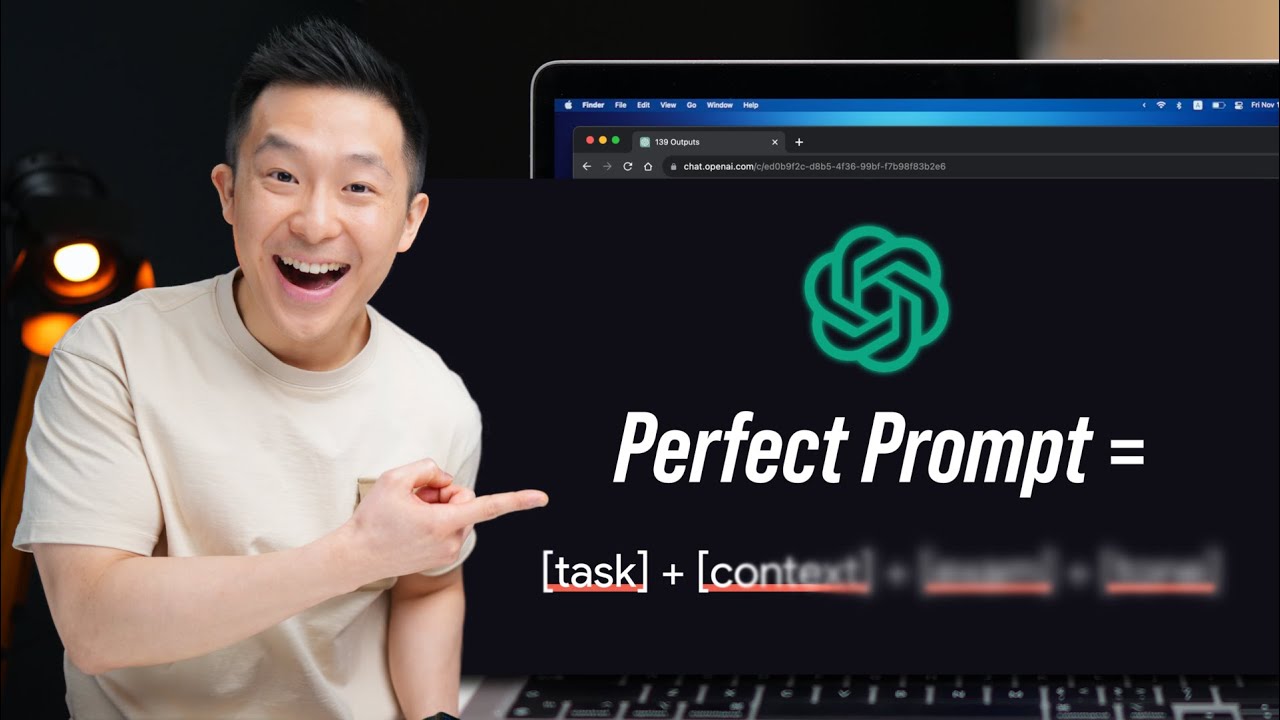
In the world of AI, prompting is an essential skill that can significantly impact the quality of outputs you receive. In this blog post, we’ll dive deep into the perfect ChatGPT formula, breaking down the six key components you need to know to enhance your prompting skills. Whether you're a beginner or someone looking to refine your techniques, this guide will provide actionable insights to improve your interactions with AI.
🤖 I found the Perfect ChatGPT Formula
It’s no secret that not all prompts generate the same quality of responses. Some yield generic outputs, while others hit the mark perfectly. After spending countless hours studying prompt engineering, I’ve discovered a formula that consistently helps me achieve high-quality results. This formula consists of six components: Task, Context, Exemplars, Persona, Format, and Tone.
Understanding the importance of these components and their order can make a substantial difference in your interactions with AI. Let’s break down each element to see how they contribute to crafting effective prompts.
🔑 The 6 Prompt Components
Each component plays a vital role in shaping your prompts. Here’s a quick overview of what they are:
- Task: What you want the AI to do.
- Context: The background information necessary for the task.
- Exemplars: Examples that guide the AI’s output.
- Persona: The character or perspective the AI should adopt.
- Format: The structure of the output.
- Tone: The emotional quality of the response.
📝 Task
The first component, the Task, is crucial. Always start with an action verb to clearly articulate your end goal. For instance, you might ask the AI to “generate a three-month training program” or “analyze user feedback.” The clearer your task, the more focused the output will be.
📜 Context
Context is often the trickiest component to nail down because there’s an infinite amount of information you could provide. To streamline this, I recommend asking yourself three guiding questions:
- What is the user's background?
- What does success look like?
- What environment are they in?
For example, instead of simply saying, “I want a training program,” you could say, “I’m a 70kg male looking to gain 5kg of muscle over three months, with only two gym sessions per week.” This context helps the AI tailor its response more effectively.
💡 Exemplars
Exemplars, or examples, significantly enhance the quality of AI outputs. Research shows that including specific examples can guide the AI toward the desired result. For instance, if you’re crafting a resume, you might provide a bullet point structure like: “I accomplished X by Y, resulting in Z.” This framework helps the AI generate a more relevant output.
Another example is during interview preparation. Instead of asking for a generic answer, you could instruct the AI to use the STAR (Situation, Task, Action, Result) framework to structure its response.
👤 Persona
The Persona component is about defining who you want the AI to be in the context of the task. For example, if you need fitness advice, you might want the AI to act as a personal trainer. If you’re applying for a job, having the AI adopt the persona of a recruiter can yield better insights. You can even use fictional characters for fun, like asking the AI to respond as Batman!
🔧 Format
Format refers to how you want the output structured. Visualize the end result you desire. For instance, if you want feedback organized in a table, specify that in your prompt. Common formats include emails, bullet points, and markdown. The better you define the format, the easier it is for the AI to produce usable results.
🎭 Tone
Tone is the emotional quality of the response and can be easily adjusted. Whether you want a formal, casual, enthusiastic, or witty tone, this component can drastically change the AI’s output. If you’re unsure about the tone, you can ask the AI for a list of tone keywords to incorporate into your prompt.
📚 Example using the Perfect Prompt Formula
Let’s put all these components together in a comprehensive prompt. Imagine you want the AI to draft an email to your boss about a new product launch:
You are a senior product marketing manager at Apple. You have just unveiled the latest product in collaboration with Tesla, the Apple Car, and received 12,000 pre-orders, which is 200% higher than the target. Write an email to your boss, Tim Cook, sharing this positive news. The email should include:
- A TL;DR section
- Project background
- Business results with quantifiable metrics
- A thank you note to the product and engineering teams
Use clear and concise language and write in a confident yet friendly tone.
This prompt effectively combines all six components, leading to a high-quality output that meets specific needs.
🤔 Good vs. Bad Prompt Outputs
To illustrate the impact of effective prompting, let’s compare a good prompt to a less effective one. A simple prompt like, “I launched a new product, please write an email to my boss,” might yield a generic response. In contrast, the comprehensive prompt we discussed earlier provides structure and context, resulting in a much more useful output.
In conclusion, mastering these six components—Task, Context, Exemplars, Persona, Format, and Tone—will significantly enhance your ability to generate high-quality outputs from AI. By applying this formula, you’ll find that your interactions with ChatGPT and similar models become more efficient and productive.
For more resources and tools to improve your skills, check out our channel. Keep experimenting, and you’ll soon be a pro at prompt engineering!



